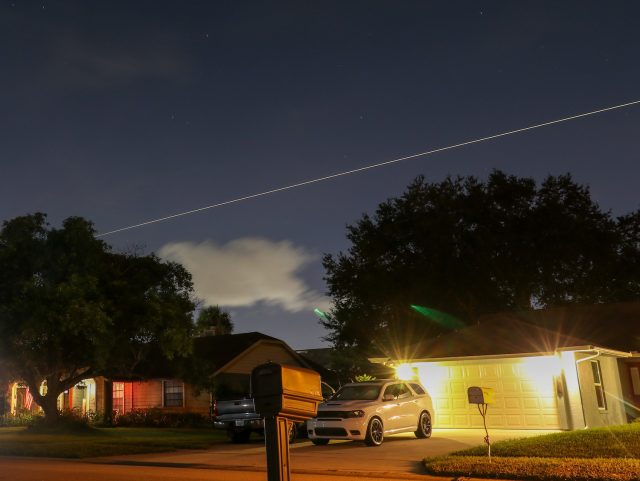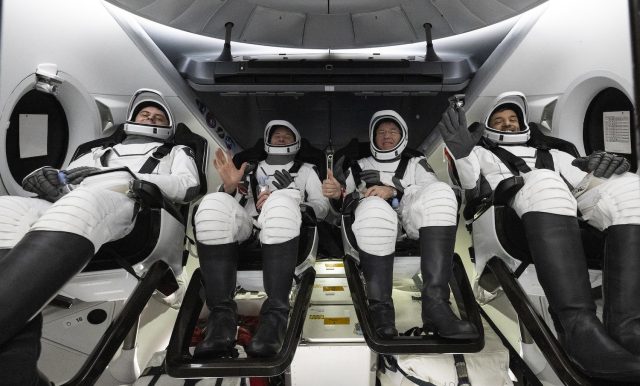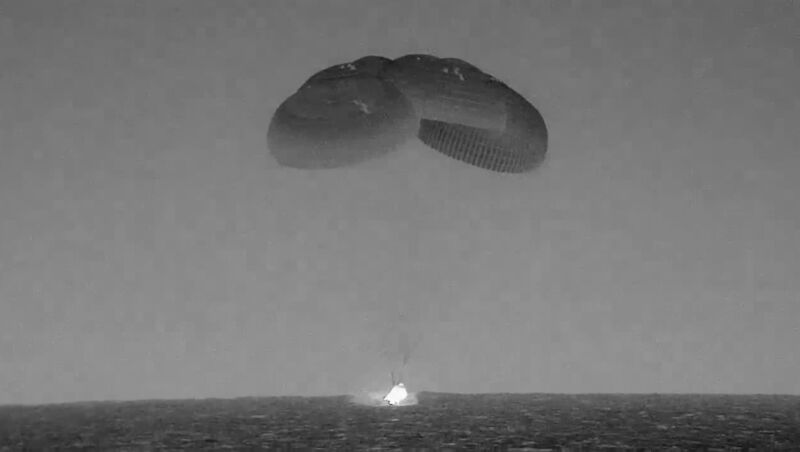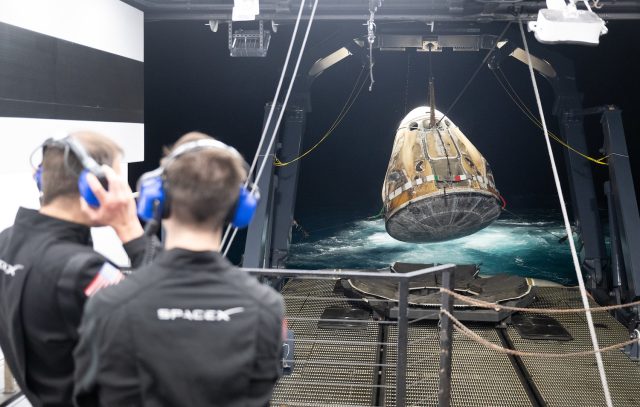A SpaceX Dragon capsule with a crew of four returning from the International Space Station streaked through the atmosphere over Florida and splashed down in the Atlantic Ocean early Monday, closing out the company's initial commercial crew contract with NASA.
But SpaceX has at least eight more space station crew rotation missions under contract with the US space agency, plus additional flights for private customers using the Crew Dragon spacecraft. The first of the crew rotation missions covered in the NASA contract extension launched on August 26, and the spacecraft is currently docked at the ISS.
The mission that launched last month, designated Crew-7, is SpaceX's seventh operational crew rotation flight to the space station. The four-person crew that arrived at the station on Crew-7 will live and work aboard the orbiting outpost until February, replacing the Crew-6 mission that returned to Earth early Monday.
Closing out 186 days in orbit
The return of Crew-6 was delayed several days as Hurricane Idalia churned near SpaceX's splashdown zones near Florida. However, the weather cleared, and the seas calmed sufficiently for NASA and SpaceX officials to give the green light for SpaceX's Crew Dragon Endeavour spacecraft to depart the space station Sunday morning.
After backing away from the space station, the Dragon spacecraft and its four-person crew set up for re-entry back into the atmosphere Sunday night. The 13-foot-wide (4-meter) capsule fired its braking rockets and closed its nose cone before dropping through the atmosphere, putting on a spectacular midnight sky show over Florida as it streaked through the sky with a trail of plasma in its wake.
Four main parachutes unfurled to slow the ship for splashdown northeast of Jacksonville at 12:17 am EDT (04:17 UTC) Monday, where a SpaceX recovery vessel pulled the spacecraft from the sea and helped its four crew members out of their seats.
The Dragon capsule splashed down in 5-foot seas, higher waves than any previous SpaceX crew return, but still within safety limits, according to Steve Stich, NASA's commercial crew program manager.
"You could see the swells, and the crew did really well in those sea states," Stich said. "And the winds were about 5 knots at landing, so it was a very nice benign landing for the crew."

NASA commander Steve Bowen, pilot Woody Hoburg, and mission specialists Sultan Alneyadi from the United Arab Emirates and Andrey Fedyaev from Russia appeared in good shape after 186 days in orbit since their launch from NASA's Kennedy Space Center back in March. The crew members were expected to undergo medical checks and fly back to their training base in Houston on a NASA jet.
"It was a nominal return," said Benji Reed, SpaceX's director of human spaceflight programs. "Dragon is healthy, the parachutes performed as expected, and our recovery teams did great. Dragon did great, and the crew appeared to do awesome."
During their six-month expedition, Bowen and his crewmates worked on numerous scientific experiments and performed three spacewalks to support the installation of new roll-out solar arrays outside the space station. Combining his experience on this mission and three previous space shuttle flights, Bowen now ranks third all-time for total time spent spacewalking, at 65 hours and 57 minutes.
Hoburg shared his experiences on the space station on social media, producing insightful videos showing daily life on the International Space Station. His videos captured the experience of an orbital reboost, training with the station's robotic arm, and exercising in microgravity, among other topics.
"I just wanted to kind of do something that I hoped was authentic and in the moment without too much preparation, just showing some of the amazing work that we get to do up here," Hoburg said last month. "So any time that I had a few extra minutes and thought I was doing something a little bit interesting, I figured I'd pull out a camera and hopefully share it with people so they could see."
Alneyadi became the first astronaut from the Arab world to fly a long-duration mission in space, marking a leap forward for the UAE's fast-growing space program. Fedyaev was the second Russian cosmonaut SpaceX has ferried to and from the space station as part of an agreement between NASA and Roscosmos, the Russian space agency.

After Monday's splashdown, SpaceX's recovery team will bring the Crew Dragon Endeavour spacecraft back to Cape Canaveral, Florida, for refurbishment ahead of its fifth flight to the space station on the next NASA crew mission in February. Meanwhile, another crew rotation is on tap at the International Space Station later this month with the launch of a Russian Soyuz spacecraft on September 15 carrying two Russian cosmonauts and a NASA astronaut to the orbiting laboratory, replacing a three-person crew wrapping up more than a year in orbit.



3175x175(CURRENT).thumb.jpg.b05acc060982b36f5891ba728e6d953c.jpg)

Recommended Comments
There are no comments to display.
Join the conversation
You can post now and register later. If you have an account, sign in now to post with your account.
Note: Your post will require moderator approval before it will be visible.